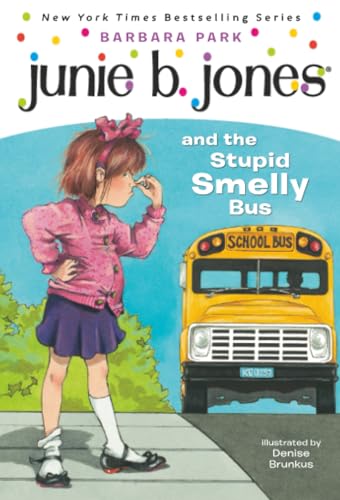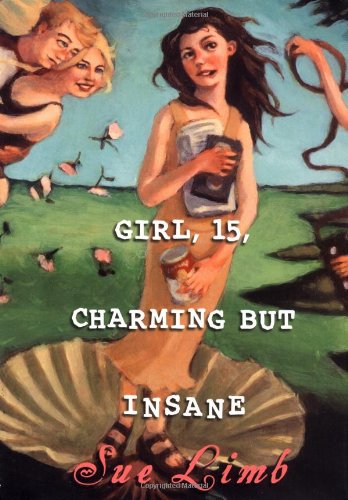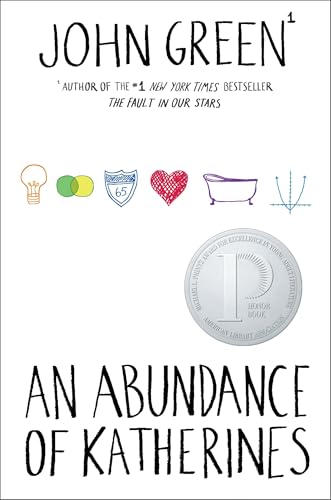[This article was originally posted February 2008 at Foreword’s Shelf Space.]
Previously, on Books for Black History Month, we covered the earlier part of African American history with fiction and non-fiction books that were educational while telling a good story. Now it’s time to march forward in time with historical fiction, biographies, and poetry.
Langston’s Train Ride, by Robert Burleigh, illustrated by Leonard Jenkins (2004)
Fantastic illustrations by Leonard Jenkins make this book a pleasure to peruse, no doubt about that. But the reader will also enjoy being taken along on a journey with Langston Hughes as a young man. As he rides on a train across the country, he is moved by the crossing over the Mississippi River. Words and phrases rush into his head, especially the phrase, “I’ve known rivers.” This book is about personal history, about heritage, and about writing. The full poem, “A Negro Speaks of Rivers,” is included at the end of the book, along with a short biography of Langston Hughes.
Dizzy, by Jonah Winter and illustrated by Sean Qualls (2006)
With rhythmic — dare I say poetic — text, this book brings the world of Dizzy Gillespie to life for those who never experienced the musical revolution of the 1920s. This particular chapter in American history shouldn’t be passed by — and no one can afford to miss it with lively, fresh artwork and passages like, “It was like he had taken a wrecking ball / and SMASHED IN / The House of Jazz, / ’til the walls came tumbling down.”
Jackie’s Bat, by Marybeth Lorbiecki, illustrated by Brian Pinkney (2006)
It’s 1947 and Joey is going to be a batboy for the Brooklyn Dodgers. He’s excited about it, but conflicted about the new player, Jackie Robinson. Joey’s father doesn’t think it’s right for a white boy to serve a black man, so Joey steers clear of Mr. Robinson. But as he continues his time with the Dodgers, he begins to see Jackie Robinson as both a baseball player and a man, which brings forth his own feelings of acceptance. The small story of one boy echoes the larger feelings of the world’s response to this revolutionary baseball player. The book includes some biographical information. The soft, watercolor illustrations complement the text perfectly.
Goin’ Someplace Special, by Patricia C. McKissack, illustrated by Jerry Pinkney (2001)
It’s the 1950s and ’Tricia Ann is heading downtown in Nashville to go “Someplace Special.” Her grandmother is reluctant to let her go on her own, but when she relents, ’Trica Ann faces a journey of pride, humiliation, encouragement, and ultimately joy as she reaches her destination — the public library, open to whites and blacks alike. The injustices of the segregated south are made all too real with this likeable character facing off against the obstacles. Pinkney’s lovely watercolors bring just the right feeling of the era to the book.
Rosa, by Nikki Giovanni, illustrated by Bryan Collier (2005)
The basic story of Rosa Parks is well known, but you’ll think you’re in for something different after seeing the cover of this book with the ominous man looking down at — the whole thing is so in-your-face and bold. The art in this book is evocative, gripping, and Caldecott Honor-winning. Rosa Parks’s personal story moves into her turning point in the civil rights movement and then continues beyond, covering many of the events surrounding her place in history. The text doesn’t complete her biography by any means, but does provide a starting place for discussion of her role and the larger context of the boycott.
Freedom on the Menu: The Greensboro Sit-Ins, by Carole Boston Weatherford, illustrated by Jerome LaGarrique (2004)
Connie would love to sit down at the counter at Woolworth’s and have a banana split, but she knows that African Americans aren’t allowed to do that. Living in Greensboro, North Carolina in 1960, she knows her color dictates where she can drink and eat and much more. But things are changing in town with Dr. King’s speech at a local college chapel and Connie’s older siblings joining the NAACP. The paintings in the book capture the sense of emotion, as well as the more tangible evidence of segregation.
I’ve Seen the Promised Land: The Life of Dr. Martin Luther King, Jr., by Walter Dean Myers, illustrated by Leonard Jenkins (2003)
A straightforward and brief biography of a hero becomes much more than that in the hands of noted author Walter Dean Myers. The content is just enough to introduce young readers to Dr. King and to his accomplishments and struggles, but not get bogged down in many details. The basics of his personal journey are presented along with essentials of the civil rights movement itself. The text is well done, but it’s the illustrations — the powerful, dramatic art — that make this title extraordinary.
Of course, these books are the tip of the iceberg in exploring African American history, but hopefully will motivate young readers to learn more. And just as important, these titles could prove inspiring for teachers, librarians, and parents to seek out books that are not only good for the mind, but good for the soul.
The Rundown
One of the bestselling preschool books of recent times was Walter the Farting Dog. At the same time, the American Library Association named as one of its best books Michael Rosen’s Sad Book, a book in which Mr. Rosen talks about his despair over the death of his son. I believe that, for most of us, what we want lies somewhere between a flatulent canine and overwhelming grief.
View my complete profile
Email MotherReader

Email MotherReader

Share It
Blog Archive
-
▼
2009
(215)
-
▼
February
(14)
- What Obama Says and More News From Around the KidL...
- Technology Is Getting Me Down
- ABC Storytime: O is for...
- The Library: It’s a Place Where Books Are Free
- Poetry Friday: Stitchin’ and Pullin’
- ABC Storytime: N is for...
- Conference Question and Courage Campaign
- Cybils Award Winners!
- My Brother Abe
- Books for Black History Month II
- Books for Black History Month
- Blog Advice II
- Blog Advice
- Introducing KidLitosphere Central
-
▼
February
(14)
Followers
MotherReader Suggests
Funny Books for All Ages
Newborn
One Year
Two Years
Three Years
Four Years
Five Years
Six Years
Seven Years
Eight Years
Nine Years
Ten Years
Eleven Years
Twelve Years
Thirteen Years
Fourteen Years
Fifteen Years
Sixteen Years
Seventeen Years
Eighteen Years
Adult
Newborn

One Year
Two Years

Three Years
Four Years
Five Years

Six Years
Seven Years
Eight Years

Nine Years
Ten Years

Eleven Years
Twelve Years
Thirteen Years

Fourteen Years
- Born Too Short
- Sex Kittens and Horn Dawgs Fall in Love
- Once Upon a Marigold
- Angus, Thongs, and Full Frontal Snogging
Fifteen Years

Sixteen Years
Seventeen Years

Eighteen Years
- Our Dumb Century: The Onion Presents 100 Years of Headlines from America’s Finest News Source
- How to Ruin Your Life
- The Daily Show with Jon Stewart Presents America (The Book): A Citizen’s Guide to Democracy Inaction
Adult

- I’m with Stupid: One Man. One Woman. 10,000 Years of Misunderstanding Between the Sexes Cleared Right Up
- The Sex Lives of Cannibals: Adrift in the Equatorial Pacific
- Things My Girlfriend and I Have Argued About: A Novel
- Why Not Me?
- Good in Bed
- I Love Everybody (and Other Atrocious Lies): True Tales of a Loudmouth Girl
- Bitter is the New Black: Confessions of a Condescending, Egomaniacal, Self-Centered Smartass, Or, Why You Should Never Carry A Prada Bag to the Unemployment Office
Copyright © 2006–2015 MotherReader All rights reserved.
Blogger Template by Anshul Dudeja | WP Theme by Templatelite
Blogger Template by Anshul Dudeja | WP Theme by Templatelite














1 comment:
I like your book suggestions for Black History. I have read most of your choices and would like to add two: I, Matthew Henson-longer text but what an amazing explorer...what perseverance. My second favorite is White Socks Only by Evelyn Coleman. I read Rosa by Nikki Giovanni all week and the 1st and 2nd graders were very intrigued by the artwork.
Post a Comment